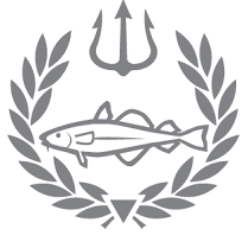We are driving back on the California freeway from the site where Steve Drogin’s submarine is being constructed. California has a mountainous topography speckled with lots of bushes and trees. Being from Massachusetts I thought it was funny to see that there are stop lights and multiple lanes on the entrance ramps for “politely merging” onto the freeway-that’s a phrase you don’t hear too often in Boston! They help lessen the traffic at rush hour.
The drive was about two hours up to the shop, most of it spent telling Mark Conlin about the internship, and them him talking to me about his work and how he got started in the industry. Mark Conlin is a professional underwater photographer whose work has appeared in National Geographic, Smithsonian, and Discover, has worked on many IMAX films, including ones for Howard Hall Productions. His story inspired me because he started out as a collector and surveyor for his school, after graduating from UCSB with a degree in marine biology. During his photographic surveying trips he would save about six exposures for himself to experiment with exposure, framing, etc. to learn more about the camera. He said that even though I will not be working my dream job when I first graduate from college, I have the potential to succeed by starting at one of these jobs and taking advantage of all opportunities that come my way. As a deckhand, he met Steve Drogin as well as Howard and Michele Hall and ended up working for them later on! Mark is an interesting guy, he knows a whole lot about the ocean and marine life but also has played a part in the construction of Steve’s submarine.
So…the SUBMARINE FACTORY was a sight to see!! You would never guess upon driving into the driveway of a small business park that hidden behind a few doors was Steve’s sub. It’s nine feet wide by maybe eighteen feet long; it’s the largest privately owned submarine and boy is it large!! It is not ready to go in the water yet but they predict it is two weeks away from submergence testing. We saw the motherboard “brains” of the sub, the three-inch plexi-glass dome that encloses the sub’s pilot and two passengers and it’s controls, the special aluminum edged seal and the enormous O-ring that seals the dome shut, and other external parts of the sub such as the propellers, pontoons, and the place where a camera will be mounted on the front.
Schmulich, the captain of Steve’s submarine, gave us an excellent tour of the sub and described how many of the parts function. He says he is still in the process of learning the controls of the sub, inside and out, and is very excited to be onboard this project. Seeing the submarine first-hand is awesome, Steve is building some really cool stuff! Next week there will be a photo shoot for the sub that sounds really neat. I can’t wait to see what Steve discovers on his adventures in it.
We hurried back to Steve’s house to run a few errands and then stopped at Gates Underwater Housings. Gates is a manufacturer renowned for their top-of-the-line underwater video housings, used by professionals all over the world. Gates is now owned by John Ellerbrock and he gave us a tour of the factory, boy was it amazing. What makes Gates unique is in the construction of their housings. Gates housings are cut out of a solid block of bulletproof machined aluminum; the precision of the high pressure water-cutter and the lack of seams greatly decrease the probability of leakages, making Gates so successful. Gates is currently making a customized video housing for Howard Hall. Mr. Ellerbrock is starting to experiment with prototype camera housings but right now he deals mainly with underwater video. Being behind the scenes in a premier manufacturing company was amazing, seeing the aluminum chips fly by us in the stripping machine I couldn’t help but wonder where that future camera might be in the future.










